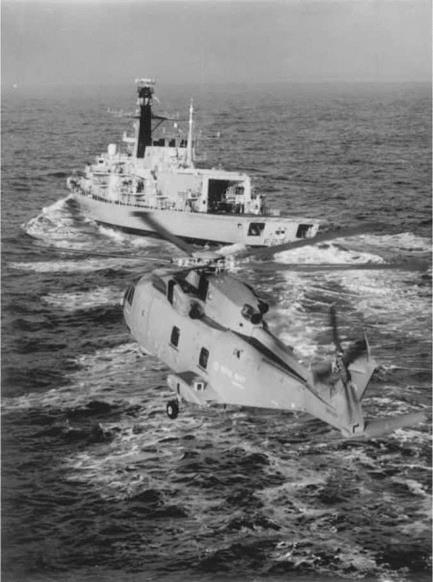Simple Guide to the Book
This book contains seven technical chapters. For an overview of the subject of helicopter flight dynamics, the reader is referred to the Introductory Tour in Chapter 2. Engineers familiar with flight dynamics, but new to rotorcraft, may find this a useful starting point for developing an understanding of how and why helicopters work. Chapters 3, 4 and 5 are a self-contained group concerned with modelling helicopter flight dynamics. To derive benefit from these chapters requires a working knowledge of the mathematical analysis tools of dynamic systems. Chapter 3 aims to provide sufficient knowledge and understanding to enable a basic flight simulation of a helicopter to be created.
Chapter 4 discusses the problems of trim and stability, providing a range of analytical tools necessary to work at these two facets of helicopter flight mechanics. Chapter 5 extends the analysis of stability to considerations of constrained motion and completes the ‘working with models’ theme of Chapters 4 and 5 with a discussion on helicopter response characteristics. In Chapters 4 and 5, flight test data from the DRA’s research Puma and Lynx and the DLR’s Bo105 are used extensively to provide a measure of validation to the modelling. Chapters 6 and 7 deal with helicopter flying qualities from objective and subjective standpoints respectively, although Chapter 7 also covers a number of what we have described as ‘other topics’, including agility and flight in degraded visual conditions. Chapters 6 and 7 are also self-contained and do not require the same background mathematical knowledge as that required for the modelling chapters. A unified framework for discussing the response characteristics of flying qualities is laid out in Chapter 6, where each of the four ‘control’ axes are discussed in turn. Quality criteria are described, drawing heavily on ADS-33 and the associated publications in the open literature. Chapter 8 is new in the second edition and contains a detailed treatment of the sources of degraded flying qualities, particularly flight in degraded visual conditions, the effects of failures in flight system functions and the impact of severe atmospheric disturbances. These subjects are also discussed within the framework of quantitative handling qualities engineering, linking with ADS-33, where appropriate. The idea here is that degraded flying qualities should be taken into consideration in design with appropriate mitigation technologies.
Chapters 3 and 4 are complemented and supported by appendices. Herein lie the tables of configuration data and stability and control derivative charts and Tables for the three case study aircraft.
The author has found it convenient to use both metric and British systems of units as appropriate throughout the book, although with a preference for metric where an option was available. Although the metric system is strictly the primary world system of units of measurements, many helicopters are designed to the older British system. Publications, particularly those from the United States, often contain data and charts using the British system, and it has seemed inappropriate to change units for the sake of unification. This does not apply, of course, to cases where data from different sources are compared. Helicopter engineers are used to working in mixed units; for example, it is not uncommon to find, in the same European paper, references to height in feet, distance in metres and speed in knots – such is the rich variety of the world of the helicopter engineer.

An EH101 Merlin approaching a Type 23 Frigate during
development flight trials
(Photograph courtesy of Westland Helicopters)











